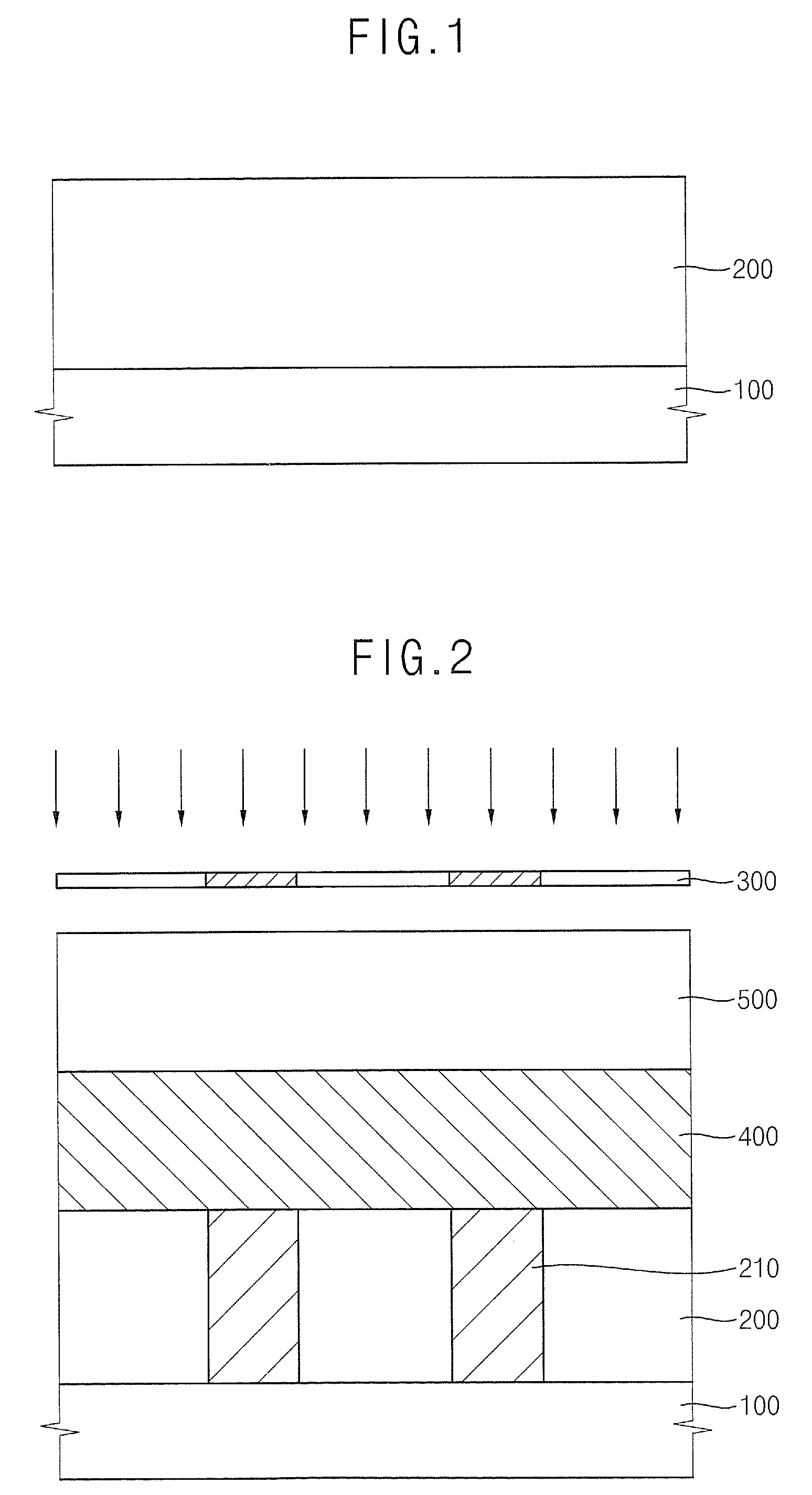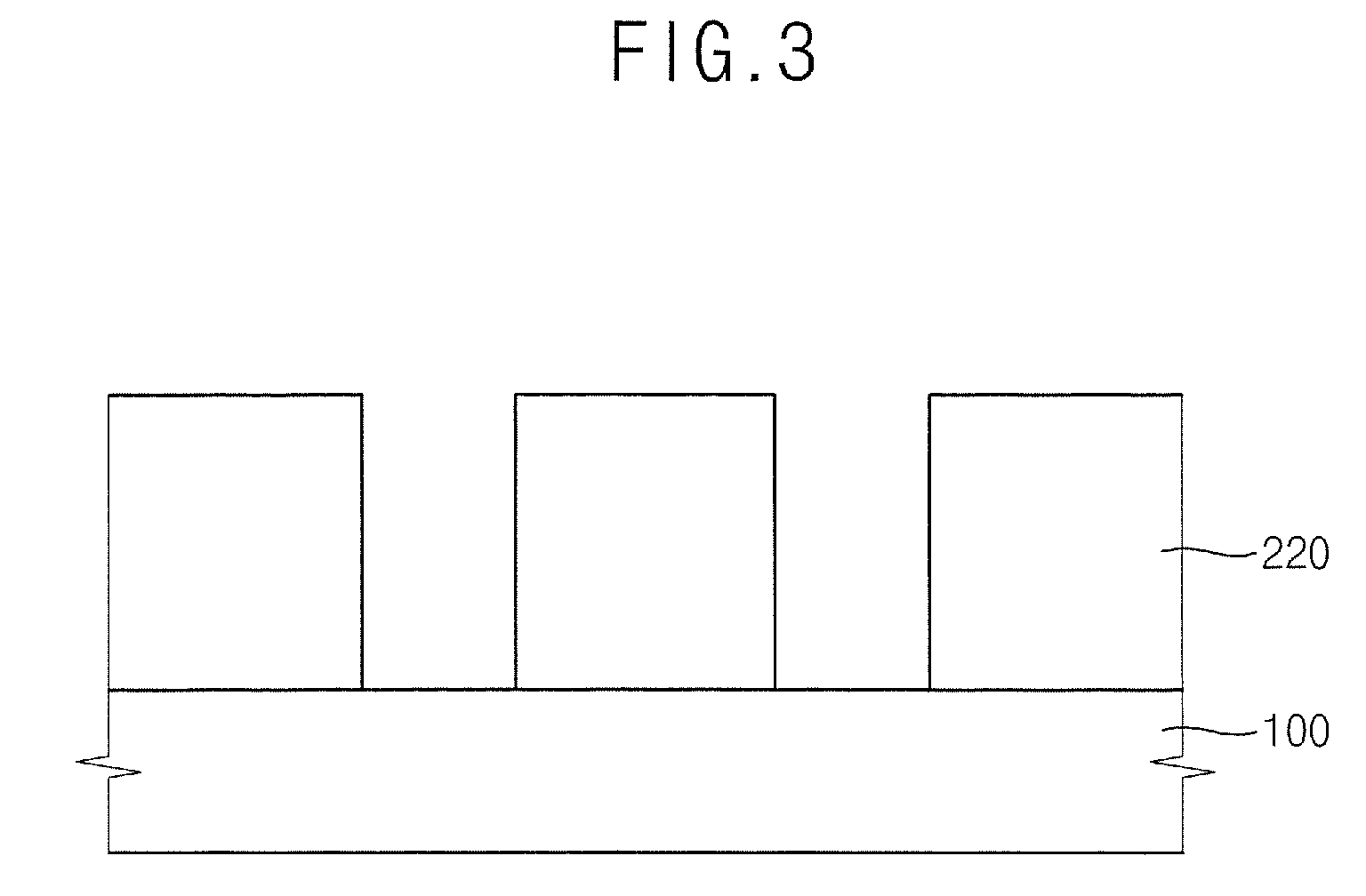Method of forming a pattern using a photoresist composition for immersion lithography
a technology of composition and pattern, applied in the field of photoresist composition and method of forming a photoresist pattern using the, can solve the problems of high cost, contaminated lens of an exposure device, and deterioration of immersion lithography performance, so as to achieve high resolution, effective dissolution, and improved photosensitive polymer hydrophilicity
- Summary
- Abstract
- Description
- Claims
- Application Information
AI Technical Summary
Benefits of technology
Problems solved by technology
Method used
Image
Examples
synthesis example 1
Synthesis of 3,4:6,7-dioxolane-adamantyl Methacrylate
[0074]After about 300 mL of acetone and about 20 mL of pentane were mixed in a two-neck flask, about 100 g of 1,3,4,6,7-pentahydroxy adamantane and about 3.09 g of p-toluene sulfonic acid were added into the two-neck flask to prepare a solution. The solution was refluxed using a Dean-Stark trap on which a stirrer and a condenser were set up at a constant temperature until water was not produced. When water was not produced, the temperature of the solution was lowered to a room temperature. About 0.3 g of magnesium sulfate (MgSO4) was added into the resulting solution and was stirred for about 30 minutes. After magnesium sulfate was removed from the solution by filtration, a filtrate was distilled under reduced pressure to obtain 3,4:6,7-dioxolane-adamantanol.
[0075]About 21.2 g of 3,4:6,7-dioxolane-adamantanol and about 16.3 g of triethylamine were dissolved in about 400 mL of benzene to prepare a solution. The temperature of the s...
synthesis example 2
Synthesis of 1,2:5,6-di-O-isopropylidene-3-O-methacryloyl-glucofuranose
[0076]After about 400 mL of anhydrous acetone was inserted into a two-neck flask, about 75 g of glucose, about 60 g of zinc chloride and about 4 g of anhydrous phosphoric acid were added into anhydrous acetone. Glucose, zinc chloride and anhydrous phosphoric acid were dissolved in anhydrous acetone by string the resulting mixture for about 30 minutes at a room temperature to prepare a first solution. When the color of the first solution became dark yellow, undissolved glucose was removed from the first solution by filtration to prepare a first filtrate. After the temperature of the first filtrate was lowered to about 0° C., a mixture, which was prepared by mixing about 40 mL of water and about 40 mL of sodium hydroxide, was added into the first filtrate to prepare a second solution having a pH of about 10 to about 11. After the second solution was filtered to prepare a second filtrate, a second filtrate was disti...
synthesis example 3
Synthesis of 1,2:3,4-di-O-isopropylidene-6-O-methacryloyl-galactopyranose
[0078]1,2:3,4-di-O-isopropylidene-6-O-methacryloyl-galactopyranose represented by Formula 14 was obtained by performing substantially the same processes as those of Synthesis Example 2 except for using galactose instead of glucose.
Synthesis of Photoresist Compositions
PUM
| Property | Measurement | Unit |
|---|---|---|
| Temperature | aaaaa | aaaaa |
| Temperature | aaaaa | aaaaa |
| Hydrophobicity | aaaaa | aaaaa |
Abstract
Description
Claims
Application Information
 Login to View More
Login to View More - R&D
- Intellectual Property
- Life Sciences
- Materials
- Tech Scout
- Unparalleled Data Quality
- Higher Quality Content
- 60% Fewer Hallucinations
Browse by: Latest US Patents, China's latest patents, Technical Efficacy Thesaurus, Application Domain, Technology Topic, Popular Technical Reports.
© 2025 PatSnap. All rights reserved.Legal|Privacy policy|Modern Slavery Act Transparency Statement|Sitemap|About US| Contact US: help@patsnap.com



